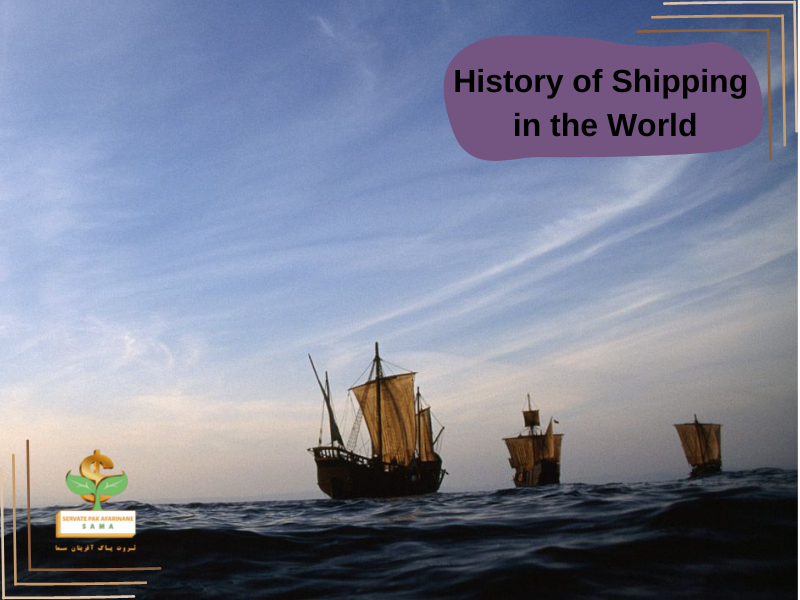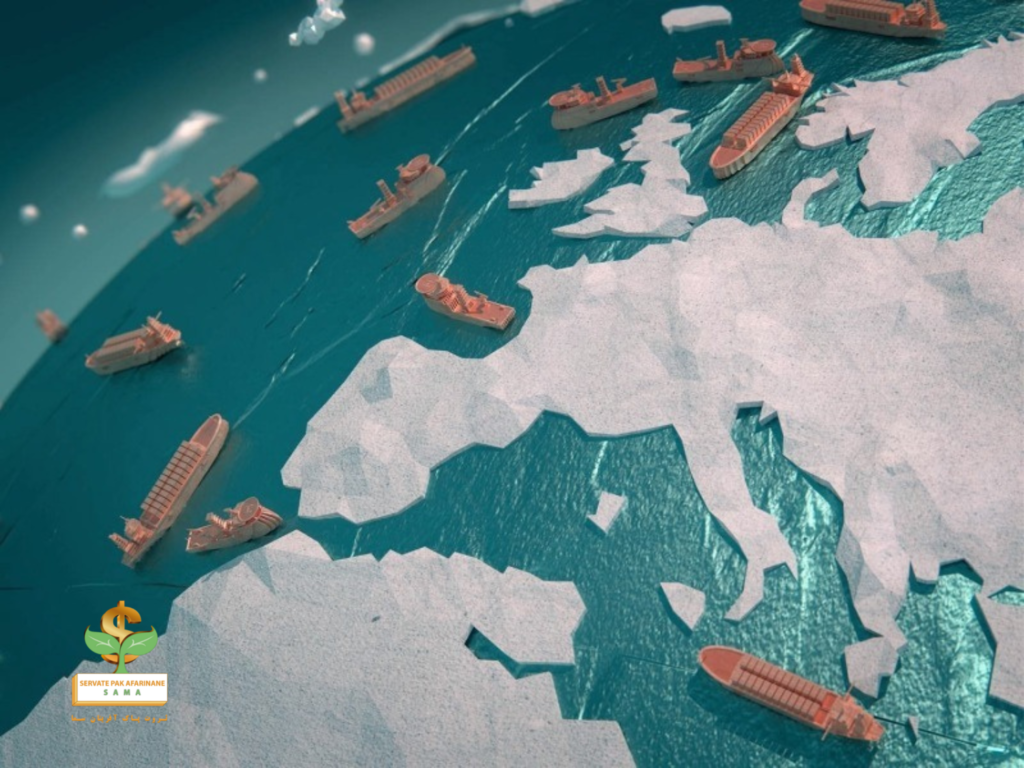
History of Shipping in the World
Transportation in its general sense, as one of the most critical factors related to international trade, has a significant impact on the macroeconomics of any country and acts as a lever that has positive and negative effects on the cost price of manufactured goods, and consequently, It is effective in trade innovations. It can affect the political, cultural, and economic conditions of countries, marine transportation as one of the strategic transportation industry subcategories has potential and appropriate advantages that make it superior and It is mainly used by applicants in international trade. In this article, we are going to talk about the history of shipping in the world and check every single century.
History of Shipping in Ancient Times
In ancient times, rivers were used abundantly to carry goods. In ancient Egypt, papyrus was used to make small burgs. Two key inventions that revolutionized the history of shipping were the wooden boat and the sail. By using these two means, the trip became more economical and safer. Until the first millennium BC, the trade of the markets of the Mediterranean region was in the hands of the Phoenicians, due to the use of wooden ships and the skill of sailors.
Focus More!
Historically, the Phoenicians played an important role in the development of the maritime transport industry. Phoenician sailors expanded their geographical horizons by penetrating the Western Mediterranean, the Atlantic Ocean, and India and brought with them the culture of the Near East and introduced the alphabet and paper to the Greeks. One of the things that played an important role in the development of maritime transport was the digging of a canal from the Nile River to the Mediterranean Sea and the connection of the Indian Ocean and the Red Sea to this sea. This canal, which was dug in 523 BC by the order of Darius the Achaemenid, was considered the biggest development in the trade of the ancient world.
History of Shipping in the Middle Ages
In the Middle Ages in Western Europe, there were changes in the matter of transportation. Due to the needs of the people and also the increase in the volume of movement of goods, many roads, bridges, and canals were repaired and reconstructed and new canals were also built. Charlemagne tried to connect the tributaries of the Danube but failed. In the 12th and 13th centuries, canals were created in Lombardy from Milan to the TC river (about 31 miles) in Italy and also in the Benelux countries (Belgium, Holland, and Luxembourg).
Marine Transport in the 14th Century
But until the 14th century, when these canals were equipped with special valves, they were not considered real canals. The most important field of progress in the years 1500 to 1900 occurred in the field of canal construction. The French achieved significant success in this regard. Undoubtedly, the most famous canal construction project was the “Doumadi” canal, which was built in 1661-1681 and connected the Bay of Biscay (Biscay) in the west of France to the Mediterranean. The canal has 109 walls, and a 500-foot tunnel and is 149 miles long. This waterway allowed ships of up to 100 tons to reach the Mediterranean without going around the Iberian Peninsula.
Marin Transport in the 19th Century
Canal shipping developed in England in the late 19th century. Through the efforts of James Bermondsey and Francis Garton, important textile centers were connected to the coastal cities. Since the cost of transportation was more important than the speed, bulk and heavy goods were moved through the canal. The development of the “Bridge Water” canal from Manchester to Liverpool in 1776 caused a sudden 50% reduction in freight costs and created a more regular and efficient loading and unloading system. In the United States, a similar process began with the construction of the Middlesex Canal in Massachusetts, Morris in New Jersey, and Union in Pennsylvania.
History of Shipping in the 20th Century
In the 19th and 20th centuries, large sea canals made shipping easier in the world. Some of them, such as Suez and Panama, reduced sailing time. While others such as Manchester and St. Lawrence reduced the cost of water transportation in border areas.
Transportation in the 20th century was accompanied by the continuation of the advances made in the 19th century with new inventions, the attention of those involved in the transportation industry was focused on more speed, better efficiency, more advanced design, and increased usefulness. In the late 1970s, passenger and cargo ships underwent major changes in form and function. The design of cargo ships and the methods of transportation and loading changed in the direction of carrying more goods. With the invention of airplanes, passenger transportation was limited to luxury ships, and steamships were gradually abandoned and replaced by ships with diesel engines. In 1958, the first nuclear-powered cargo ship was launched in Camden, England. This ship was called Savannah. But it was very expensive to build and had less cargo space and required more crew.
Growth in the Shipping Industry
Today, the shipping and marine transportation industry has become one of the most complex industries in the world and the most advanced technologies are used in it. Ships have become very diverse in terms of construction and use, and unloading and loading operations and other port activities are equipped with the latest scientific and industrial systems. These investments and developments have caused a huge volume of 6 billion tons of cargo to be moved by 30,936 commercial ships over 1,000 tons (2005 statistics) in 3,022 small and large ports in 188 countries worldwide.
Advances Improvement in the Transportation Industry Due to Marine Transportation
Marine transportation due to its special characteristics and the possibility of traveling in international open waters. In the shortest possible distance despite the distinction such as the ability to
- transport
- transfer cargo in large volumes
- long routes
- suitable time
- price Inexpensive
- physical health of the transported cargo and the like have a special place in different stages of transportation.
New technology and modern technical and instrumental technologies have been used in this branch of transportation on a very large scale. This breadth and scope of ship construction includes
- propulsion
- marine control
- navigation systems
- equipment, mechanical issues
- telecommunication and communication methods
and continues in equipping, launching, and operating large international ports. In all possible fields, even separation and classification of cargo, issuance of various invoices, etc.


